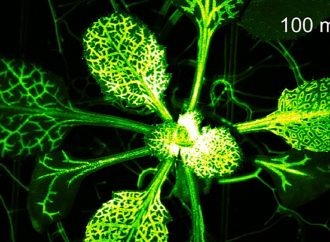Scientists at Department of Energy (DOE), Brookhaven National Laboratory (BNL) and Cornell University discover a new way to maximize the energy of particle accelerator making it more energy efficient and dubbing it the ‘Green’ accelerator.
Source: Forbes
The potential implications of this discovery virtually touch all fields that have to do with electronics, starting from semi-conductors used to built faster and better computing devices, to medical imagining and medical therapies to cure diseases. Recently, I wrote about a new discovery of heat transfer that has insights for revolutionizing the field of semi-conductors, and this discovery also plays a role in that, but now from the perspective of high energy physics. In order to understand the meaning of the new discovery, let’s go back and understand what a particle accelerator is and why people are interested in particle accelerators.
The goal of a particle accelerator is to do what it the name calls for, or to accelerate particle. The particles that are being accelerated are usually sub-atomic particles such as electors or protons, and sometimes heavier atoms. These particles are accelerated to the speed of light, which is the fastest speed something can travel at in the universe. Once they are accelerated to such high speeds then they collide with the target, which is another particle or an atom, for example. The whole purpose of the particle accelerator lies in the collision, because once the particles collide with the target, physicists then can extract information about structure of matter by analyzing the radiation and the smaller particles that were emitted as a result of a collision. The most well known and powerful accelerator of the time is Large Hadron Collider (LHC) in Cern, Switzerland, which several years ago reported a discovery of the Higgs Boson, achieving international acclaim. This discovery was important because it thought the particle was long theorized to exist and be a fundamental building block of the universe, and the scientist received a Nobel Prize for its discovery. This emphasizes the importance of particle accelerators from a scientific and research prospective.

Although these scientific advances sound exciting, they may be rather theoretical leaving one thinking: does the particle accelerator have anything to do with my day-to-day life? The answer to that, it does – and very much so! Although you may be unaware but your computer uses a particle accelerator to display images on your screen! In addition to that, the particle accelerator plays an important role in industry, specifically in medical imagining and semi-conductor devices. In fact, only 1% of particle accelerators worldwide are used for research purposes, other particle accelerators are used for commercial and industrial work. One example is that in the semi-conductor industry, which is basically powers all of our electronics and computer devices. A process known as ion-implantation relies on the use of particle accelerator, as it is responsible for doping silicon in order to make it a semi-conductor, which in turn is used to generate energy to power our electronic devices. In addition to that particle accelerators play an important role in medical imaging and technology, one of the many examples is MRI, which is commonly and widely used for imaging of various body tissues.
Of course, as one may imagine, accelerating particles to the speed of light takes much effort and ingenuity, as it is not a simple task. Thus, the design of the accelerator has much to do with its power. The team at Cornell, DOE and BNL have designed a new way to re-use the energy, making the accelerator more energy efficient and able to produce beams of higher energy, which was not possible before. To give some perspective on the feat, this design concept was first proposed in 1965 by Maury Tigner , but technology at the time was not advanced enough to support this innovation. Thus, it took several decades before technology caught up and this idea could be implemented. The way this particle accelerator conserves energy is that it first accelerates the particles through the beam, but then at the deceleration stage, instead of dumping that energy, it captures that energy and then recycles it in the use for the next acceleration, thus making it more energy efficient. Also, it is able to producer brighter and stronger beams than before, which previously required too much energy, but is possible now with this new reusable technique. This has interesting implications to the advances of medical imaging technologies, as well as the super-conducting devices. As scientists are able to capitalize on this innovation, it will allow us, in the years to come, make faster electronics and more advanced treatments in medicine for disease eradication.
Source: Forbes

































Leave a Comment
You must be logged in to post a comment.